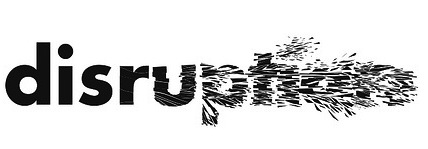Our global, collaborative marketplace is driving innovation faster than ever before. Small companies are leveraging the power of social and automated marketing, appearing larger and making it harder to differentiate between small and big businesses. This increased lack of differentiation means it’s getting harder to get noticed.
Disruption in the marketing world is not a new idea – in fact, it’s one of its founding principles. But there are two sides to disruption – dark and delightful. How many times have you been confused by that home page takeover that unexpectedly interrupts the article you’re reading online? Or the video that autoplays from a mysterious place on a website you’re visiting, leaving you scrambling for your speaker volume? This is the dark side of disruption – annoying, frustrating and downright ineffective. Disruption to gain audience attention, when done right, can be absolutely delightful.
Here are 5 ways to create delightful disruption:
1) Stop thinking you’re the customer. I can’t tell you how many times I heard someone talk as if they know what the customer wants. There are only a handful of brilliant people in this world who know what their customers want, one of them having been Steve Jobs. Otherwise, the skill is rare. My friend Phil McKinney, former CTO of HP will tell you that to really get to know your customer, you need to place yourself at the point of transaction. Phil would observe people buying laptops in Best Buy stores, then ask why they chose products other than HP’s. His grassroots efforts paid off; he learned during one visit that the materials they were using to build the keyboards on their new HP laptops were reflecting light for anyone wearing glasses, making the screen too hard to see. He immediately called his team, the product was redesigned and sales jumped through the roof because he literally learned from the customer.
2) “Eat like a bird, poop like an elephant”. This is one of my favorite quotes from Guy Kawasaki. Guy coined this now famous phrase while he was the chief evangelist at Apple, referring to the innovative approach the company took with its products and software, such as Word Perfect. He explained that users really just wanted to bold, italicize, and underline, and overwhelming users with options was not their main goal – it was just getting the core features right. I believe products and even campaigns need to start with simplicity and a clear roadmap. The benefit we have today is that roadmaps can now be shared with its influencers, and refined through immediate feedback.
3) Delight with the unexpected. It’s the little unexpected surprises a customer finds along their journey with your product or service that get them talking. Perhaps it’s an unexpected service, something as small as a handwritten thank you note, or a response back from a brand on social media to something you shared. We’re all busy and are under pressure to just “get stuff out the door.” But these unexpected delights should be encouraged and built in as part of your customer experience, not in addition to, if you want raving fans.
4) Use storytelling as a strategy. The journey a potential customer takes on the road to buy your product or service is as important as the moment they transact. Take for instance the new explosive wearables market. Google, Apple and newcomer Pebble are all in a race. Even though Pebble was one of the largest Kickstarter events, gaining a massive community behind their product, they were not prepared for this massive event –as demonstrated in their massive delay in manufacturing and promotion. Had they been prepared operationally to stay ahead of the other two giants hot on their tails, staying in communication with their new audience and keeping them a part of their story, they would not have lost momentum and sales. The journey matters to all the characters in the story – tell it and keep them with you.
5) Design the experience. There is nothing worse than making someone guess how to easily be a part of your brand. If no one can see and feel your vision, it’s not working. Companies like FedEx, Zappos, Disney and Virgin have proven that from vision to customer care, their promise is consistently delivered. This is by careful design, and their revenue shows it.
KEY TAKEAWAY: We are living in a creative economy where everything is being questioned. To get noticed and keep people talking, be a delightful disruptor and reap the delightful benefits.
I would love your comments, feedback and anything I may have missed below.






